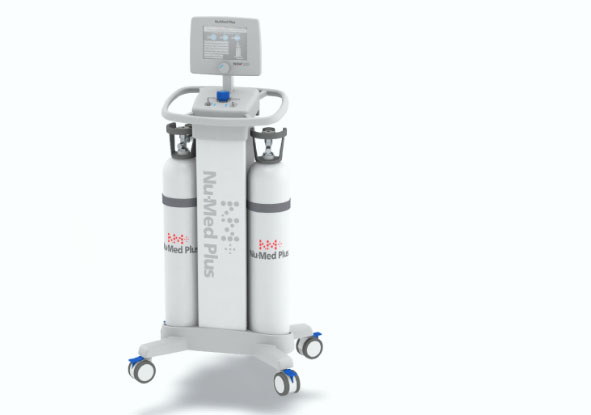The Life Sciences Report: Dr. Earl, thanks for joining us today. Would you tell us about yourself?
Brett Earl: I fell in love with medicine after following my home town family doctor around his practice and started to see the impact that he had in making a difference in people's lives. Then I went through medical school and became board certified in emergency medicine. I practiced emergency medicine for 16 years.
Through a series of events, I became very sick myself. I ended up developing a fungal infection in my lungs. Fungal infections are very difficult to discover. They don't show up on x-rays. They don't show up on blood tests.
My illness drove me to study functional medicine and then, ultimately, foundational medicine, where instead of just looking at pills, prescriptions and surgery, we actually look at root source causes of disease and what's triggering the underlying source of those diseases and the processes involved to restore health. What that means is that we can make dramatic changes in patients' health at a foundational and underlying level. It's very powerful as far as changing people's lives.
I was able to get on the path of wellness and turn my health around. Getting excited about my own health improvements and then having the opportunity to spread that excitement to others is a very enjoyable process. When you know better, you do better. That was the case with myself. I knew of a better path and a better way. And I've since practiced functional and foundational medicine, and I look to help people regain their health rather than cover it up, mask it or cut it out.
TLSR: From there, what sparked your interest in nitric oxide?
BE: Since the discovery of the medical uses of nitric oxide by Dr. Louis Ignarro and others around 20 years ago, there have been over 60,000 research articles and research publications on the topic.
What we thought was just a simple molecule that offered vasodilation, or dilation of the blood vessels, we're now finding has implications across the entire human body. It works as a neurotransmitter in the brain, so it actually helps the brain cells communicate between themselves. It has indications for our immune systems. It has dramatic assistance in the pulmonary system. And the list goes on and on and on.
What got me interested was the fact that it worked at such a foundational and fundamental level. Every cell in the body had some type of reaction or makes changes based on nitric oxide.
We talked about 60,000 articles that have been generated in the past 20 years. Additionally, researchers know of at least 675 different places throughout the human body where nitric oxide is used and benefits the body. So again, there isn't anything more foundational and pure than that kind of interaction throughout the entire body.
TLSR: That's interesting because you hear only about its use with premature babies and helping their lungs develop. So why is it that its wider uses aren't well known?
BE: The uses are incredible and powerful, It is virucidal, meaning it kills most of the viruses. It kills most bacteria. It's been shown to be effective in Ebola, malaria and many other seemingly incurable diseases. It is effective for trauma, post-stroke. It helps in pulmonary and respiratory disease. Nitric oxide has been extensively used in heart and vascular disease. The list is massive. It's very effective and helps with almost all diseases. That said, to your question, with so many incredible uses, why isn't it more widely available and used?
Well, it comes down to one very important thing: cost. Up until now, and I'm using a generalization of numbers, a relatively small canister of nitric oxide can cost upwards of $9,000–15,000. By the time the nitric oxide is actually applied to the patient through trained personnel who have the expertise with the devices that are necessary for delivery, it becomes very, very expensive. My understanding is that in the case of many newborn premature patients, the expense can run $75,000 by the time they finish their care. And that's a very difficult expense to swallow. That is why it is currently reserved for only the most precious of patients.
A nutrient or a chemical that is very expensive becomes frowned upon when used for simple things, such as wound healing, which nitric oxide works for; instrument and workplace sterilization, which it works for; improving the way that a heart patient is treated in the catheter lab, etc. In each of those scenarios, cost becomes a very real consideration. Cost becomes the limiting factor. In today's medical market, nitric oxide is not even given a chance to succeed in a patient treatment scenario.
Research is being done because there are often funds for research, and labs can often get the product for a lesser cost. But from a patient standpoint, it's been very cost prohibitive.
TLSR: Is the gas always inhaled as a treatment? Or are there situations where it's placed on the skin?
BE: The research has looked at both of those scenarios: treating an open wound versus treating internal processes. If it's internal, then it would be something that would be inhaled. And when treating an open wound, then research has shown that it speeds healing and increases blood flow to the area that needs increased nutrients and oxygen delivery. And, again, nitric oxide sterilizes the area from other bacteria.
TLSR: You talked about the cost consideration. Can you talk about what's now been happening with the patents for nitric oxide and what might be changing at this point?
BE: Most of the patents were based on a certain process for making nitric oxide. Because of the limited number of processes and the patent associated with them, there was really one option as far as purchasing nitric oxide.
Over the last few years, research has looked at different ways to produce nitric oxide. There is the Spark process, which is where they pass the chemicals into a chamber and then pass electrical current through. That process gains a certain amount of the nitric oxide. The largest challenges with this technology is the heat and energy necessary to generate the nitric oxide, and the purity of the product.
Nu-Med Plus Inc. (NUMD:OTC.MKTS) uses a completely different method from any of the previous processes. That's why it's been able to be patented and has implications for uses from the hospital setting to Third-World countries. The technology is both sophisticated, elegant and portable. The Nu-Med process can also make canisters that are very pure that can be used with the current medical systems. It produces a nitric oxide product that uses very low to no heat, and is much, much safer. It's not going to be a risk as far as combustion in the healthcare setting, where there are likely other flammable chemicals and therapies around the patient. And finally, it just is much more cost effective as far as getting it into the hands that need it.
TLSR: What is the situation with getting the right approvals from the U.S. Food and Drug Administration (FDA) for Nu-Med's product at this point?
BE: I do know that it has received multiple patents, and Nu-Med is finalizing FDA approval. A 501(k) is in the works.
TLSR: Do you have any sense of how much cost savings this would be over the existing suppliers of nitric oxide?
BE: There are some initial setup costs and some costs with equipment. But otherwise, the cost savings is significant. It is to the point that when this gets approved, it will have helpful indications throughout the medical universe from neurosurgery to Third-World countries. Nitric oxide delivered in this manner will be helpful for an innumerable host of research and medical applications.
There is a three-day conference in Europe—with the latest one being held in Oxford, England—where teams of researchers do nothing but talk about their research and indications for nitric oxide. This conference lasts for three days.
Just from an emergency medicine standpoint alone, there are indications for patients with heart attacks, high blood pressure, pulmonary issues, be that chronic obstructive pulmonary disease, difficulty breathing, asthma and so forth. Stroke patients will benefit from it. Trauma patients and wound care patients will see positive effects. Patients who have some type of vascular issue in their legs can be helped. Infections, post-surgical patients. . .the list just goes on and on and on. Furthermore, outside of the United States there are infections that absolutely devastate mankind that will be benefitted.
TLSR: What else should we know?
BE: One of the other indications and issues that we've alluded to is the research component. Yes, there's a lot of research going on, but more research is only hampered by the availability of nitric oxide. This is one of the areas that Nu-Med has also focused on. We have a hospital unit. We have portable units. We have a clinic unit. And then we also have a research unit. That research unit allows nitric oxide to be used and delivered right where it is needed, again at considerable convenience and savings. One can only imagine that if suddenly more research could be done for less money then that the research will expand exponentially.
TLSR: Thanks for your time, Dr. Earl.
Dr. Brett Earl serves as the vice president of medical marketing for Nu-Med Plus and sits on its board of directors. He is a Board-Certified Emergency Physician with more than 15 years of experience in Emergency Medicine and more than a decade in Functional Medicine Physician. He is currently the president and founder of Denali Medical Center. Dr. Earl received his medical degree from the University of Nevada, Reno. He has been published in numerous medical journals and serves on various medical boards in Utah.
Read what other experts are saying about:
| Want to be the first to know about interesting Biotechnology / Pharmaceuticals investment ideas? Sign up to receive the FREE Streetwise Reports' newsletter. | Subscribe |
Disclosure:
1) Patrice Fusillo conducted this interview for Streetwise Reports LLC and provides services to Streetwise Reports as an employee. She owns, or members of her immediate household or family own, shares of the following companies mentioned in this article: None. She is, or members of her immediate household or family are, paid by the following companies mentioned in this article: None.
2) The following companies mentioned in this interview are billboard sponsors of Streetwise Reports: Nu-Med Plus. Click here for important disclosures about sponsor fees. The information provided above is for informational purposes only and is not a recommendation to buy or sell any security.
3) Dr. Brett Earl: I, or members of my immediate household or family, own shares of the following companies mentioned in this article: Nu-Med Plus. I, or members of my immediate household or family, are paid by the following companies mentioned in this article: Nu-Med Plus. My company has a financial relationship with the following companies mentioned in this interview: None. I determined which companies would be included in this article based on my experience using nitric oxide and no formal understanding of the sector. I had the opportunity to review the interview for accuracy as of the date of the interview and am responsible for the content of the interview. I have not confirmed the exact costs of nitric oxide mentioned in this interview.
4) The interview does not constitute investment advice. Each reader is encouraged to consult with his or her individual financial professional and any action a reader takes as a result of information presented here is his or her own responsibility. By opening this page, each reader accepts and agrees to Streetwise Reports' terms of use and full legal disclaimer. This article is not a solicitation for investment. Streetwise Reports does not render general or specific investment advice and the information on Streetwise Reports should not be considered a recommendation to buy or sell any security. Streetwise Reports does not endorse or recommend the business, products, services or securities of any company mentioned on Streetwise Reports.
5) From time to time, Streetwise Reports LLC and its directors, officers, employees or members of their families, as well as persons interviewed for articles and interviews on the site, may have a long or short position in securities mentioned. Directors, officers, employees or members of their immediate families are prohibited from making purchases and/or sales of those securities in the open market or otherwise from the time of the interview or the decision to write an article, until one week after the publication of the interview or article.





































